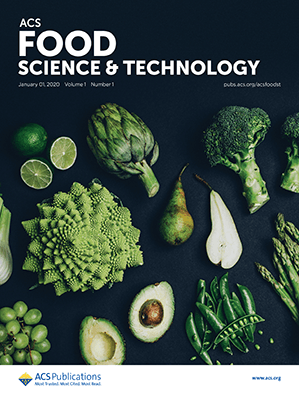Gluten and wheat proteins can trigger allergies and celiac disease, driving researchers to find alternative food products that can replace traditional cereal flours in the home and commercially.

Gluten is found in the grains of wheat and other cereal crops, including barley and rye. Flours made from these grains are often used in baking, where the gluten gives elasticity and helps dough to rise. It is estimated that around 6% of the U.S. population have gluten sensitivities, but many others try to avoid wheat in their diet for a variety of reasons. As a result, the gluten-free food market is big business, with a global value of $14 billion in 2022.
New research published in ACS Food Science & Technology reports on work from a team in Mexico who are investigating the potential of sweet potatoes as a wheat-free flour replacement. Sweet potatoes are an excellent source of carbohydrates, carotenoids, and antioxidants, but the ways in which they are processed into flour can affect the physicochemical, hydration, thermal, and pasting properties. The researchers set out to evaluate the effect of drying temperature and grinding pattern on the properties of a flour made from orange sweet potato and determine its potential application in functional food products.
Their results showed that drying at a higher temperature of 176°F (80°C) in combination with a consecutive shear–impact grinding pattern produced flours that would be ideal to use as thickeners. In contrast, shear grinding produced flours with water retention suitable for bread products –regardless of whether the sweet potato was dried at 122°F or 176°F (50°C or 80°C) in the process.1
This is not the first time scientists have explored novel flour preparations. A 2022 study examined the impact of a flour made from banana peel on the shelf life and properties of cookies.The results showed that cookies enriched with banana peel flour had improved antioxidant properties and total phenolic content compared to those made entirely with wheat flour– benefits that were achieved without altering their physical or nutritional properties.2 Another team turned to beans for inspiration, performing a contrast study to investigate the secondary metabolite profiles between pastas made from bean flours compared to traditional wheat flour.3
One recent Review in ACS Food Science & Technology critically evaluated potential uses of pulse protein, presenting current knowledge and ideas for future research. Pulse proteins are extremely versatile not only as a gluten-free flour substitute, but they can also be used in microencapsulation carrier matrices, biopolymer-based edible packaging, and cosmetics.4 Mushrooms could be similarly useful in flour form, given that they are rich sources of protein, carbohydrates, and minerals. They are also important sources of ergosterol (protovitamin D2), phenolic compounds, and terpenes.5
Whether it’s to avoid gluten or meat, innovations in plant proteins have made significant strides in recent years. But as the research has revealed, processing must be a key consideration in developing novel flours and other foodstuffs that meet consumer expectations in terms of both performance and taste.
References
- Moreno-Ochoa, M. F. et al. Technological Properties of Orange Sweet Potato Flour Intended for Functional Food Products as Affected by Conventional Drying and Milling Methods. ACS Food Sci. Technol. 2022, 2, 5, 895–904.
- Shafi A, et al. Effect of the Addition of Banana Peel Flour on the Shelf Life and Antioxidant Properties of Cookies. ACS Food Sci. Technol. 2022, 2, 8, 1355–1363.
- Geng, P. et al. Contrast Study on Secondary Metabolite Profile between Pastas Made from Three Single Varietal Common Bean (Phaseolus vulgaris L.) and Durum Wheat (Triticum durum). ACS Food Sci. Technol. 2022, 2, 5, 895–904.
- Nadeeshani, H. et al. Recent Trends in the Utilization of Pulse Protein in Food and Industrial Applications. ACS Food Sci. Technol. 2022, 2, 5, 722–737.
- You, W. S. et al. Mushrooms as Functional and Nutritious Food Ingredients for Multiple Applications. ACS Food Sci. Technol. 2022, 2, 8, 1184–1195.

